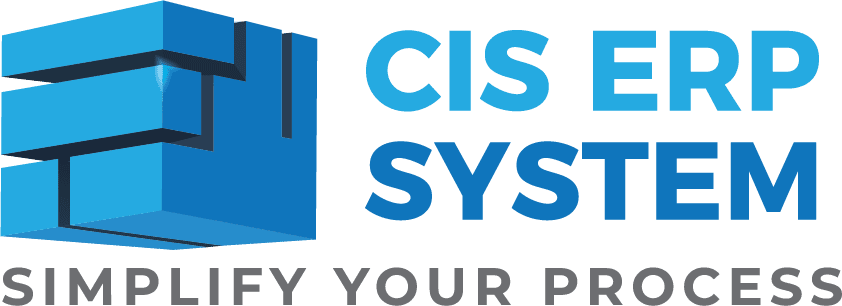
Running a business feels overwhelming when your data is stored in different places. You check the CRM for customer details, the ERP for inventory, and your inbox for updates. It breaks your momentum and burns you out. This is where CRM-ERP integration changes everything.
CRM-ERP integration connects your customer relationship management (CRM) software with your enterprise resource planning (ERP) system. Instead of hopping between platforms, you get one clear view of your customers, operations, and data.
Let’s explore how it works, why it matters, and how your business can benefit from it.
ERP vs CRM: What’s the Difference?
CRM systems help manage customer relationships. They track emails, calls, and support issues. On the other hand, ERP systems run your business processes like accounting, inventory, and operations.
While both store vital data, they usually live in different systems. That’s why employees bounce between them, wasting time and missing out on big-picture insights.
What is CRM-ERP Integration?
CRM-ERP integration connects these two systems. It shares important info like orders, payments, and customer data between them. Envision your sales team checking a customer’s payment status or stock availability directly in the CRM; it’s fast, easy, and accurate.
When sales and finance stop working in silos, everyone wins. Your teams save time, your customers feel heard, and your decisions improve.
Why CRM with ERP System Matters Today
People want quick service. They don’t want to explain their problem twice. If your systems don’t talk to each other, your team can’t deliver the fast, personal service that customers expect. Hence, with CRM and ERP software working together, this issue is resolved. Ensuring your business moves faster and stays ahead.
Integrating Customer Data with ERP: How It Helps
When you integrate customer data with ERP, it’s easier to spot patterns. For instance, if a customer often orders the same item, your team can suggest a subscription or bulk deal.
This data also helps in planning inventory, staffing, and even marketing. Instead of guessing, you act with clarity.
The Benefits of CRM-ERP Integration
Reduced Manual Data Entry and Improved Accuracy
Integrating CRM and ERP systems helps reduce manual entry and ensures front-end workers have access to accurate back-end data. This improves customer interactions and speeds up solutions to business needs.
Real-Time Visibility Across Teams
Integrated systems provide sales teams with a near real-time view of inventory and timelines, enabling more accurate quotes and confident upselling. Operations teams can see new sales orders immediately and prepare ahead.
Elimination of Redundant Work
Teams stop wasting time with spreadsheets and data verification. Everyone works with the same real-time information, which speeds up the sales cycle and removes delays caused by misinformation.
Consistent and Up-to-Date Customer Information
Disconnected systems drift apart over time. Integration ensures updates made in one system are reflected in the other, preventing confusion and potential lost sales.
Better Forecasting and Smarter Planning
With insights from finance and service teams, sales reps can forecast more accurately and adjust expectations when needed. Integrated data eliminates guesswork.
Increased Productivity and Time Savings
Reps spend less time chasing information and more time selling. With centralized data, your operation becomes faster, scalable, and more growth-ready.
Elimination of Data Silos
Integration removes barriers between departments. It prevents information from being trapped in one system and ensures everyone can access the necessary data.
Fewer Errors and Cleaner Records
Manual entry increases the risk of mistakes. Integration helps avoid errors like assigning sales to the wrong client or updating incorrect inventory.
Enhanced Employee Focus and Morale
With less busywork, employees can focus on meaningful tasks. Reps craft better emails, respond faster, and close more deals, boosting revenue and morale.
Coordinated Order Fulfillment
Finance, sales, and operations teams collaborate more effectively. Everyone sees the same customer details and order statuses, improving planning and communication.
Accurate Pricing and Inventory Information
By connecting ERP pricing and availability data to your CRM, sales teams can avoid quoting unavailable items or incorrect prices. This builds customer trust and protects profit margins.
5 Must-Have CRM-ERP Integration Points
- Contact and Account Sync:
Contact and account data stays in sync, ensuring your records remain clean and your teams stay aligned. - Quote and Order Centralization:
Quotes and orders don’t get lost in email threads or misfiled documents—they live in one connected system. - Sales History Access:
Sales history is easy to access, enabling reps to suggest the right products at the right time. - Payment Status Visibility:
With the payment status visible to the team, no one has to wait on finance for updates. - Real-Time Inventory and Pricing:
Inventory and pricing data are always up-to-date, helping reps avoid promising what they can’t deliver.
What Strategies Can Help Achieve ERP Integration?
iPaaS (Integration Platform as a Service)
iPaaS solutions are specifically designed to address ERP integration challenges and streamline the process. These platforms are typically cloud-native and support a wide range of integration types, including:
- API publishing
- Data integration
- Application integration
- On-premises and cloud integration
- B2B ecosystem
A central feature of iPaaS is its API integration platform, which manages the entire lifecycle. It enables workflow design, connectivity, data mapping, and transformation. With this platform, businesses can seamlessly connect ERPs, CRMs, proprietary systems, and customer service applications.
Point-to-Point Integration
Point-to-point involves connecting each system or application directly to the ERP software. This method is straightforward when dealing with a limited number of tools. However, it presents some challenges:
- Requires separate integrations for every system
- Becomes more complex as more applications are added
- Can be time-consuming and hard to maintain
Despite these drawbacks, it can still be a viable strategy for businesses that need tight, customized integrations for specific applications.
Enterprise Service Bus (ESB)
An Enterprise Service Bus is a modern and scalable ERP integration strategy. It enables communication between applications through a centralized communication bus. Key benefits include:
- No need to reconfigure existing apps when new ones are added
- Centralized communication simplifies the integration process
- Easier to scale and manage over time
With ESB, IT teams can integrate new applications quickly by connecting them to the communication bus, making it a flexible and future-proof solution.
Challenges in Integrating CRM and ERP Systems
While it is indeed possible to integrate CRM and ERP systems, doing so is not without its hurdles. These platforms are fundamentally designed for different purposes, making seamless integration challenging. Here are some of the main obstacles organizations often face:
Limited IT Resources
Due to the technical complexities involved, integrating CRM and ERP systems typically requires significant IT involvement. This demand for skilled resources and specialized tools can lead to prolonged implementation timelines.
System Complexity
Both CRM and ERP systems have their intricate ecosystems. ERP environments may include a mix of legacy on-premise systems, cloud-based applications, and various integration tools.
Similarly, CRM often consists of multiple cloud-based tools. Each system has its unique architecture and requires specialized expertise to manage and operate effectively.
Outdated Custom Integrations
Some organizations still rely on old, custom-coded point-to-point integrations. While these solutions may have been quick and cost-effective initially, they often lack flexibility and scalability, making it difficult to adapt as business needs evolve.
How to Get Started with CRM-ERP Integration
- Define your goals
Start by identifying what you want the integration to achieve — for example, faster quote generation or improved inventory visibility. - Choose the right tools
Select integration tools or platforms that support easy and reliable connections between your CRM and ERP systems. - Involve key departments
Include stakeholders from sales, finance, and operations to ensure the integration meets cross-functional needs. - Start small
Begin the integration with a single department to test functionality and minimize risk. - Scale and optimize
Once the initial implementation is successful, the integration can be gradually expanded across other departments, refining the process for better performance.
Conclusion
CRM-ERP integration helps you connect the dots across teams, tools, and customer journeys. It removes roadblocks, saves time, and drives better results. It’s the upgrade your business needs today.

